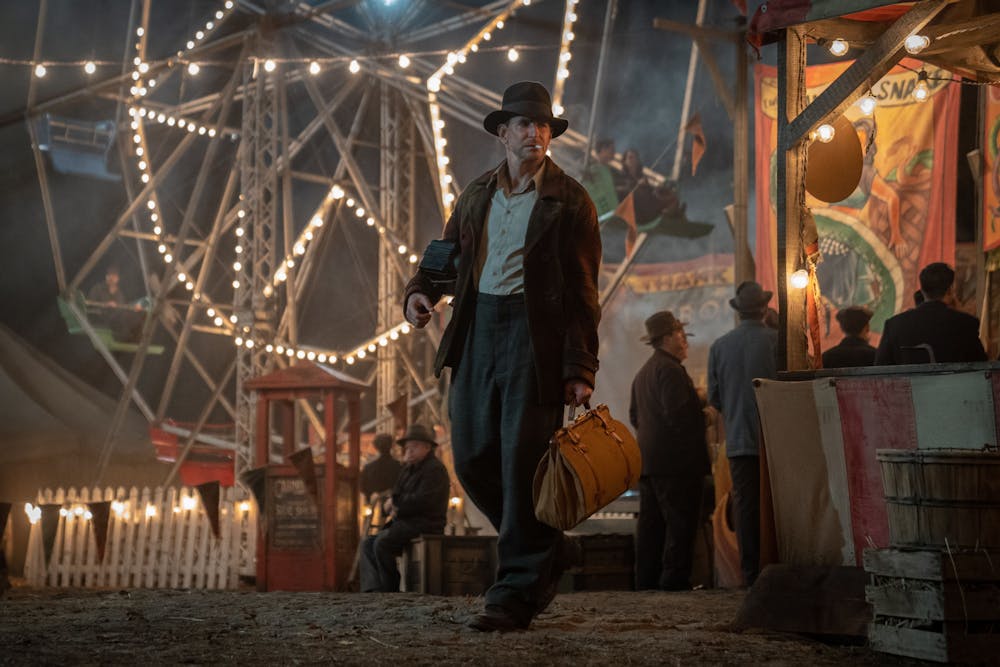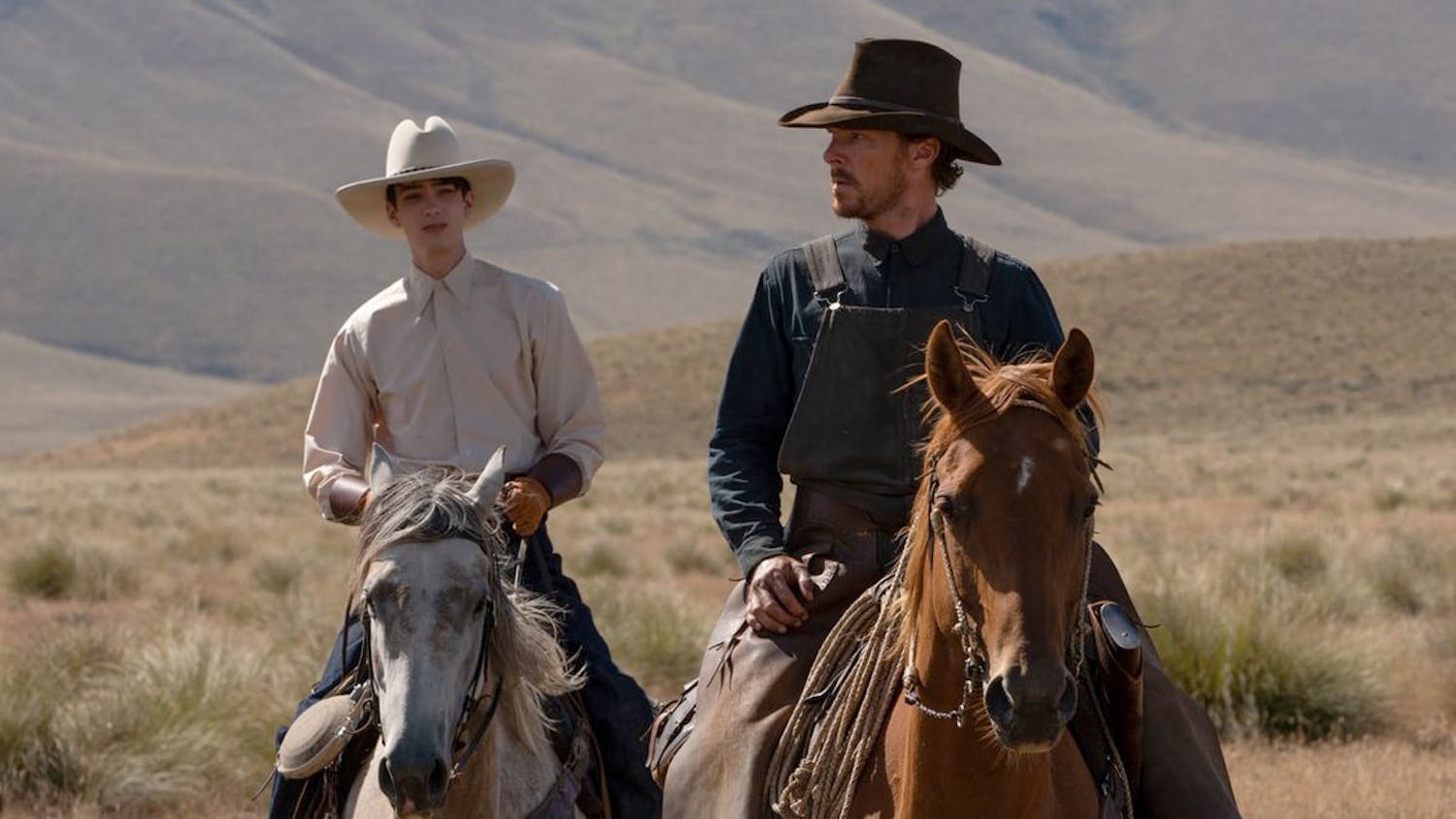Audiences tend to walk away from Guillermo del Toro movies with two reactions: that it was weird, and that it was amazing. Each of del Toro’s works draws on the fantastical and the grotesque to deliver absorbing, visually distinctive narrative experiences. For example, his film “Pan’s Labyrinth” follows a girl in WWII-era Spain who embarks on a supernatural odyssey after meeting the titular creature, and 2017 Best Picture winner “The Shape of Water” tells the story of a mute woman who falls in love with a humanoid sea monster. “Nightmare Alley,” del Toro’s latest film, is no different. This noir updates the acclaimed 1947 original by offering a richly textured immersion into the dangerous, and often frightening, world of mentalism.
The film opens with a striking image. A man, whom viewers will come to know as Stanton Carlisle (Bradley Cooper), drags a body into a hole in the floor of a decrepit house. He lights a match, tosses it in the hole and walks out of the house to board a bus. The darkness of this scene looms heavily over the rest of the film. From here, Carlisle stumbles upon a traveling carnival, run by the eccentric Clem Hoatley (Willem Dafoe), where he takes a position as an assistant to Zeena the Seer, a mind reader (Toni Collette). But Carlisle is ambitious — he wants to find the thing that he is “good at,” a sense of purpose that has always eluded him. With the help of Zeena’s drunken husband Pete (David Strathairn), Carlisle discovers his talent for the practice of mentalism. He learns the trade of reading and manipulating his peers, and before long, he sets off from the carnival with the stage performer Molly Cahill (Rooney Mara) to achieve “the world and everything in it.”
Carlisle’s journey is one of deteriorating morals and increasing desperation. Something that is never in flux in “Nightmare Alley,” however, is del Toro’s visual mastery. He demonstrates this skill by matching the film’s visual style to the distinct atmosphere of each of its locations. This alignment becomes clear in the film’s early scenes at the carnival, a place of excess and gross spectacle and an escape for people to experience the exotic sights and sounds censored by their daily lives. Del Toro expresses the grimy nature of the carnival on-screen through monstrous props and sets, including pickled newborns, hellish fun houses and raving captives forced to eat rabbits for the amusement of the crowd. Provocative on their own, these images are enhanced by eerie, deeply atmospheric lighting that lets the viewer glimpse even the smallest raindrops slipping down the side of a carnival tent.
The plot takes a sharp turn when Carlisle meets the psychiatrist Lilith Ritter, a femme fatale played by a frosty Cate Blanchett. Her entrance into the film also marks a switch in its visual style. Del Toro contrasts the lurid muddle of the carnival with the composed Ritter and her ornate New York office, defined by smooth marble surfaces, plush furniture and cool, teal-tinted lighting. This production design is extremely pleasing to the eye, but the director pushes its function within the film beyond mere aesthetic value. As the imagery transitions from the distasteful yet authentic pomp of the carnival to the calculated veneer of Ritter’s office, so too does Carlisle descend deeper into a deadly scheme of fraud and deceit. Del Toro’s expression of character through image climaxes during the film’s most thrilling sequence, a brutally violent encounter between Carlisle and an affluent client (Richard Jenkins) desperate for the mentalist to apparate his deceased wife. The director stages the action against the backdrop of snow falling softly on a shadowy, labyrinthian courtyard that at once sets the ominous mood of the sequence and manifests Carlisle’s conflicting motivations. It is rich, riveting filmmaking.
And yes, the writing is great too. The story ends with a brilliant twist delivered by a perfect final shot. It showcases Cooper at his most unhinged, with a cut to black leaving the image burned in the audience’s mind. “Nightmare Alley” is a unique cinematic experience, perfectly suited for theatrical viewing. It is in darkness that del Toro lures his audience into the secrets and horrors of his own creation, showing once again why he is one of the freshest, most exciting directors of the moment.
Jack Torpey '24 (he/him) is an Arts and Culture Editor. He writes film reviews for the Reel Critic column.
Jack is studying English with a minor in Film and Media Culture. Outside The Campus, he works as a peer writing tutor at the Writing Center and is a member of the Middlebury Consulting Group.




